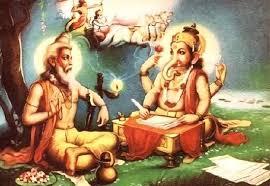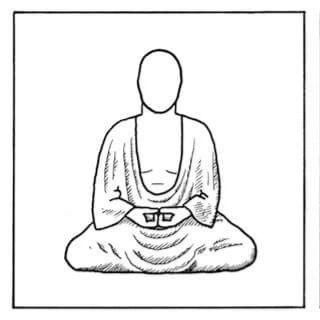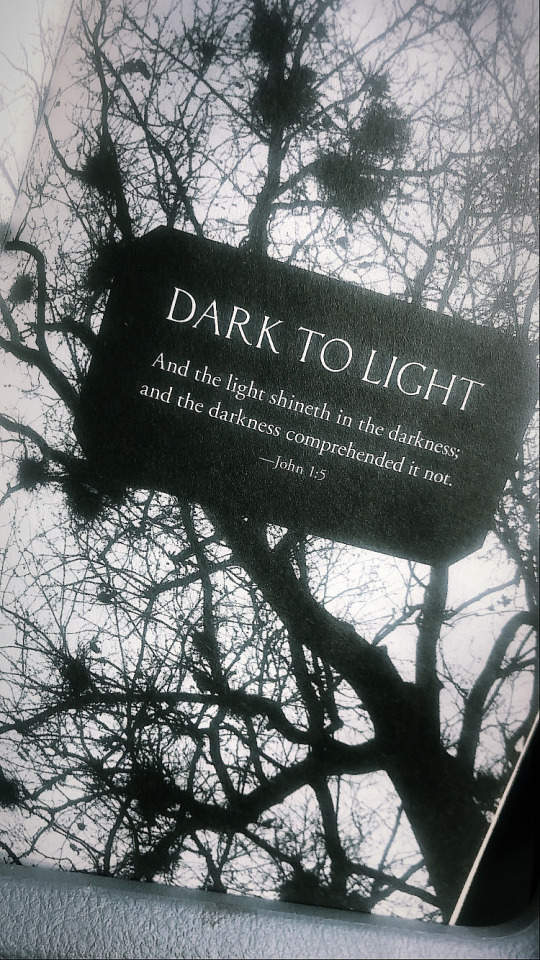#anitya
Photo

"When we see a wave on the ocean that is smaller than another wave, do we think that the smaller wave failed at life, that it didn’t try hard enough, that it should have done better, that it is not worthy of existence? Or do we recognize that the size and force of each wave is a happening of nature—that an infinite web of causes and conditions produces each particular movement in the ocean—that there is no “self” inside the wave that can be blamed for being smaller? We know that in nature, some waves are smaller than others. We don’t give it added meaning. And it’s easy to see that all the waves—big or small—are equally water, equally ocean—and that there are no actual boundaries between the different waves—they are one whole waving movement. But when it comes to human life, we apply a very different kind of evaluation. We insert the imaginary self, the phantom operator, and we think we are truly separate and on our own, to be blamed for our failures and praised for our successes.” — Joan Tollifson #Anicca #Shunyata #Śūnyatā #Anitya #Advaita (at New Haven Zen Center) https://www.instagram.com/p/Ci2NMR5uAwr/?igshid=NGJjMDIxMWI=
31 notes
·
View notes
Text
Anicca
Anicca Pali, Anitya Sanskrit:Lit. not-eternal, impermanent. One of the first insights of the Buddha ‘all that arises ceases’, are not reality, not nirvana, not liberation.
Anicca is one of the deepest Buddhist teachings, to understand ‘all that arises ceases’. Seeing this is liberation.
That all things are brought about by a cause is conventional truth. That they neither arise or cease is…

View On WordPress
3 notes
·
View notes
Photo









Family |23
#elizamalkhasyan#bag#stellamccartney#fall17#microjewelry#theruineomellette#familyhouse#giacomuzzi#renèriller#elirupi#redhair#isabellechapuis#anitya#michaeljohansson#quote#hellessy#fall22#lenhorinspiration#fashionkeys#colorereport#trend2024#lenhorAE#moodboard
1 note
·
View note
Text
18Teaching Of Bhagavad Geeta change your life in 2023
The Bhagavad Geeta is a sacred Hindu scripture that is part of the ancient Indian epic, the Mahabharata. It is a conversation between Lord Krishna and the warrior Arjuna on a battlefield and contains teachings on duty, self-realization, and the nature of reality. The word “Geeta” is derived from the Sanskrit word “geet” which means “song” or “poetry”. It is called the “Bhagavad Geeta” because it is a song or poem spoken by Lord Bhagwan (God) Krishna.
The Bhagavad Geeta was first said by Lord Krishna to Suraya dev before Arjuna, However, when he was given the teachings of the Gita, he had already taken birth on earth as a king." He forwarded it to his son Mannu. Mannu forwarded it to his son Ichavaku, and after that, it got disappeared for some time. So Lord Krishna again spoke to the warrior Arjuna on the battlefield of Kurukshetra.The Bhagavad Geeta is part of the ancient Indian epic, the Mahabharata, which is traditionally attributed to the sage Vyasa. Vyasa is said to have composed the Mahabharata, including the Bhagavad Geeta.


2. The Knowledge of the Self, or Atma Gyan,
Knowledge of the Self or Atma Gyan is one of the 18 teachings of the Bhagavad Gita. It is understanding the true nature of the self beyond the body and mind. According to the Gita, the Self or Atma is eternal, immortal, and beyond birth and death. The body is only the self's temporary dwelling place and the mind is an instrument for the self's use. By gaining Self-knowledge, one can realize one's true nature and attain inner peace and happiness. The Gita teaches that the ultimate goal of life is self-realization and liberation from the cycle of life and death.


Read complete article .... Click here
0 notes
Photo

The Impermanence of Thoughts No matter how many times we’ve thought that thought in the past, the very fact that we can shift to another thought reminds us it’s not permanent. — Shaila Catherine, “Beyond Distraction: Your Virtues Are Stronger Than Your Defilements” #Anicca #Anitya (at New Haven Zen Center) https://www.instagram.com/p/Cp7eeF4OvXh/?igshid=NGJjMDIxMWI=
0 notes
Text
mob choirさんの「exist」の大まかな歌訳と、この歌から語彙、その1:Aメロ❶
mob choir's 'exist' in rough translation + vocabulary, part 1: verse 1
youtube
translator's note:
i am a singer. it is not my aim to write singable lyrics in my native tongue; i translate for those who want a sense of what is being sung, to help me better commit lyrics to memory, and to aid my own study of the japanese language (and hopefully yours as well, kind reader!).
multiple translation passes are necessary to produce a poem that preserves as much of the song's meaning as possible while matching its rhythms, so i would hesitate to call what i am doing 'translation'. i think 'rough' is appropriate here.
learning songs in one's target language is a particularly active and participatory kind of immersion! i would much rather sing this in the original japanese, anyway.
vocab + lyrics below the cut.
この歌から語彙
words from this song
目を閉じる 〖 こまっちまう・me wo tojìru 〗 to close one's eyes.
浮遊(する)〖 こまっちまう・fuyuu 〗 floating, drifting. also meant 'wandering about, meandering, difficult to pin down' in an archaic sense.
うずき 〖 疼き・uzùki 〗 usually translated in JP-EN dictionaries as 'ache' or 'twinge'. to my surprise, when i looked 疼き up in a monolingual dictionary, i found that it actually refers to a 'throbbing pain'; 'ache' is off by at least an order of magnitude. related words are うずく (the verb form) and ズキズキ (the mimetic word).
失う 〖 うしなう・ushinàu 〗 to lose (something or someone), to miss out on something.
焼き付く 〖 やきつく・yakìts'ku 〗 lit. or fig. to be seared into, to leave a strong impression, to be etched into.
今際 〖 いまわ・imawa 〗 one's last moments, hour of dying.
惜別 〖 せきべつ・sekíbetsu 〗 a reluctance to or regret at parting.
迫る 〖 せまる・semàru 〗 here to approach, to be imminent.
無常 〖 むじょう・mujou 〗 the japanese buddhist equivalent of anitya; uncertainty, impermanence, change as a force.
つかむ 〖 掴む・ts'kàmu 〗 to seize, grasp, grab, hold...
歌詞
lyrics
Aメロ
目を閉じても 浮遊する疼き
even when i close my eyes
a throbbing pain i can't quite pin down
失うほどに 焼き付く shape
the more i lose,
the stronger the impression left behind-shape
今際の惜別に 迫ってく無常
in my last moments on earth, i don't want to leave
the uncertainty that lies ahead fast approaches
この手で掴む missing piece
the missing piece i'll seize with my hands
part 1|part 2|part 3|part 4
#mob psycho 100#mp100#mp100 meta#mob choir#exist#langblr#studyblr#japanese language#japanese#日本語#japanese langblr#language learning#lyrics in translation#歌詞#訳詞#learning japanese with songs#this song rips out your heart#and caresses it in a minor key#sana from sajou no hana on vocals#omg#mob choir RIP#一連の記事#mp100 analysis
62 notes
·
View notes
Text
Got a few pickup lines, pick your fav:
Hey, my name is Microsoft Windows, can I crash at your place tonight?
Are you an atomic orbital? cuz I think your attractive interactions are strong enough for bonding
Are you carbon? Cuz I'd love to date you
Are you Nitrogen? cuz baby, I think we could form a triple bond
Are you benzene? cuz I think a ring would suit you
Are you at the center of the Laniakea Supercluster? cuz you're very attractive
Are you calculus? cuz I could study your curves all night
Are you caffine? cuz I think you could keep me up
Are you a wave? cuz I think we could constructively/destructively (choose based on situation) interfere
Are you helium-4? cuz I think we could occupy the same position
Are you a wave-particle? cuz I could measure your slit
Are you an electrical outlet? cuz you could make me twitch
Are you Hegel? cuz I could be your slave
Are you anitya? cuz we could change eachother
Are you ISO 8601? cuz your date is perfect
Are you my eax register? cuz I could add to you
Are you LSD? cuz you intensify my thoughts
Are you the NSU? cuz I could shred your files
Are you icecream, cuz i could lick you
Are you close? cuz I would release for you
Are you Tumblr? cuz i would blaze it with you
Are you satan? cuz you could punish me for my sins
Is your number 666? cuz you seem like a beast
Are you a picture? cuz I wanna pin you against a wall
Are you Fentanyl? cuz you make my hog twitch
Are you a toothbrush? cuz I want you in my mouth
Are you my surgeon? cuz you could rearrange my insides
Are you T-cells? cuz I will make you remember me
Are you a neutrino? cuz I wish I could feel you
Are you melatonin? cuz I want you when in bed
Are you a low temperature electron ? because id like to form a cooper pair and occupy the same space with you~
Are you Lee Harvey Oswald? cuz I want you to blow my mind
27 notes
·
View notes
Text
oh gods it's come back again - that plague of people sharing some bolox about "ooh hey we slowed down chirping crickets and look they sound like a heavenly choir uwu" so us being us the last time round we found a cricket sound and did our own slowing down mp3 so here it is slowed down 2x 4x 8x 16x (we think) and spolier alert they sound like owls
https://www.yoxi.net/anitya/av/single-cricket-slowed-steps.mp3
2 notes
·
View notes
Text

Sarva Samskara Duhkha, Sarva Samskara Anatma, Sarva Samskara Anitya
9 notes
·
View notes
Photo

Observe the Clouds Traditionally, clouds are symbolic of things indeterminate. Composed of air and water, their essential nature can be attributed to neither element but arises in an obscuring of the two, a betwixt-and-between phenomenon, not unlike human beings, those nebulous creatures who themselves seem caught between realms, floating along between the shimmering horizons of birth and death, here and there, earth and heaven. Buddhist psychology refers to the aggregate of what we call personality as “the five clouds of entanglement.” — John P. O’Grady, "Clouding" #Shunyata #Śūnyatā #Anicca #Anitya (at New Haven Zen Center) https://www.instagram.com/p/ChZeXL8uIHD/?igshid=NGJjMDIxMWI=
6 notes
·
View notes
Text
Real Talk About Real Practice
Meditation isn’t a magic bullet, it’s also not any greatly mysterious practice. It’s very simple, and its benefits are in step with its simplicity.
In this, meditation is a bit like a diet and exercise regime. The processes and procedures of eating well and moving adequately are too very simple, but they can feel quite daunting. However, if one follows the regime the benefits are all but entirely guaranteed and predictable with mathematical precision. Despite this simplicity, so much of what gets tossed around as “the benefit(s) of meditation” is greatly exaggerated, and when not, focused entirely on ancillary effects.
In the Zen vein, which informs so many currently in vogue contemplative traditions (despite their many names to the contrary, from Catholic “centering prayer” to “Jewish mindfulness meditation”), meditation is parsed down to its bare essentials: the positioning of the body so as to facilitate control of the breath and focused attention on the contents of the mind, especially as it interfaces with the gates of perception.
Meditation is in essence an intentional recalibration of one’s internal reality to the world beyond it, and indeed, through it. In this recalibration we regain the ability, as if anew, to perceive things as they are and to respond to them in kind.
Most all of our suffering, personal and collective, bounds from the fundamental misalignment of perception to reality, and then from our miscalculated and malformed reactions to the reality we presume to encounter, which is often anything but the one before our eyes and beneath our feet.
When we see things as they are, and respond to them as we may, with aware acceptance and whatever agency is at our disposal, we cease from strife. This abandoning of superfluous ado (note: strife), so often primed with unexamined grief and unchecked longing, is at the very heart of what meditation is all about.
Sure, sitting quietly for a time may lower your blood pressure for a time (ever wonder why the nurse at your doctor’s office keeps you waiting for 5-10 minutes in the consult room before taking your vitals?), and you might even build a simultaneous distance and tolerance from and for the stressors in your life with constant practice, but these aims miss the mark. They supplant what should be the intentionals of practice with incidentals of practice. And overtime the results become less and less remarkable, and one finds themself still laden with strife.
To practice meditation well we must be clear about what meditation is, and what it is for. Practice that avoids these questions is a bit like having exploratory surgery without any particular indication, save for generalized dis-ease- better to wait for a clear symptomatology that points toward a clear diagnosis and treatment plan.
In the case of Zen, the symptoms of the generalized dis-ease of human being are clearly addressed in the fundamental assertions of the “Four Noble Truths,” that are best explored in tandem with a competent spiritual director (just as surgery is best guided by a highly skilled physician). This teaching is supported by others, namely those concerning one reality (sunyata), two perspectives (samvrti and paramartha), and three seals (anitya, anatma, and dukkha/nirvana), alongside the practice of the five precepts, and six perfections.
Each of these teaching are provisional, and require exploration and confirmation in one’s own experience, supported of course with the practice of meditation for the gestalt that is Zen practice to come together and actualize the aims it endeavors to deliver on (no less than the transcendence of suffering and the realization of wellbeing despite all of life’s machinations to the contrary).
Frankly, not all modes or traditions of meditation are created nor supported equally. Zen’s robust philosophical heritage, which doesn’t require faith in things unseen and unmanifest is a unique strength, but not one that can or should be subscribed to frivolously.
On any path their looms the possibility of caveats and roadblocks that need to be carefully traversed. In Zen we’re reminded time and time again that this is best done in the company of an experienced and competent guide, but those can be indeed hard to find. When setting out to find such a spiritual friend be sure to ask yourself if beyond the trappings of religiosity, they manifest the personal qualities that they seek to help you arrive at.
~Sunyananda
#zen#buddhism#buddha#buddhist#dharma#enlightenment#sangha#awakening#nirvana#spirituality#peace#religion#love#liberation#spiritual#joy#spirit#happiness#moksha#meditation
2 notes
·
View notes
Text
Uno dei suoi primi maestri di religione aveva richiamato la sua attenzione sulla Passing Show, una marca di sigarette che il padre fumava, e lo aveva istruito a dare inizio alla sua meditazione pensando all'intera vita come a una rappresentazione effimera, un fiume che trasportava accanto alla sua salda attenzione ogni oggetto, ogni esperienza, ogni desiderio. Vijay meditò sull'immagine di un fiume che scorre e prestò ascolto alle parole senza suono della sua mente, anitya, anitya, impermanenza. Ogni cosa è transitoria, si ricordò: tutto nella vita e ogni esperienza scivola accanto altrettanto sicura e irrevocabile come il paesaggio che fuggiva al di là del finestrino.
- La cura Schopenhauer; Irvin Yalom
0 notes
Text
NIDIDHYASANA
(INTENSE CONCENTRATION)
Dr. Syed asked,
"Bhagavan says the whole world is the swarupa of Atma. If so, why do we find so many troubles in this world?"
With a face indicating pleasure, Bhagavan replied "That is called Maya.
In Vedanta Chintamani, that Maya has been described in five ways. One by name Nijaguna Yogi wrote that book in Canarese. Vedanta has been so well dealt with in it, it can be said to be an authority on the Vedanta language.
There is a Tamil translation.
The five names of Maya are,
Tamas, Maya, Moham, Avidya and Anitya. Tamas is that which hides the knowledge of life.
Maya is that which is responsible for making one who is the form of the world appear different from it.
Moha is that which makes a different one look real: sukti rajata bhranthi
- creating an illusion that mother-of-pearl is made of silver.
Avidya is that which spoils Vidya (learning). Anitya is transient, that which is different from what is permanent and real.
On account of these five Mayas,
troubles appear in the Atma like the cinema pictures on the screen.
Only to remove this Maya it is said that the whole world is mithya (unreal).
Atman is like the screen.
Just as you come to know that the pictures that are shown are dependent on the screen and do not exist otherwise, so also, until one is able to know by Self-enquiry that the world that is visible is not different from Atma, it has to be said that this is all mithya. But once the reality is known, the whole universe will appear as Atma only.
Hence the very people who said the world is unreal, have subsequently said that it is only Atma swarupa.
After all, it is the outlook that is important. If the outlook changes, the troubles of the world will not worry us.
Are the waves different from the ocean?
Why do the waves occur at all?
If asked, what reply can we give? The troubles in the world also are like that. Waves come and go. If it is found out that they are not different from Atma this worry will not exist."
That devotee said in a plaintive tone, "However often Bhagavan teaches us, we are not able to understand."
"People say that they are not able to know the Atma that is all-pervading.
What can I do?
Even the smallest child says,
'I exist. I do; and this is mine.
So, everyone understands that the thing !' is always existent. It is only when that 'l' is there, the feeling is there that you are the body, he is Venkanna, this is Ramanna and the like.
To know that the one that is always visible is one's own self, is it necessary to search with a candle?
To say that we do not know the Atma swarupa which is not different but which is in one's own self is like saying 'I do not know myself, said Bhagavan.
"That means that those who by sravana (hearing) and manana (repeating within oneself) become enlightened and look upon the whole visible world as full of Maya, will
ultimately find the real swarupa by nididhyasana," said the devotee.
"Yes, that is it. Nidi means swarupa; nididhyasana is the act of intensely concentrating on the swarupa with the help of sravana and manana of the words of the Guru. That means to meditate on that with undeflected zeal. After meditating for a long time, he merges in it. Then it shines as itself. That is always there. There will be no troubles of this sort if one can see the troubles of this sort if one can see the thing as it is. Why so many questions to see one's own self that is always there?" said Bhagavan.
- Letters from Sri Ramanasramam. (119)
1 note
·
View note
Photo

"There is no preparation for death except opening to the present. If you are here now, you'll be there then." — Stephen Levine #Anicca #Anitya #Anatta #Anatman (at New Haven Zen Center) https://www.instagram.com/p/Comj_MTOoRC/?igshid=NGJjMDIxMWI=
1 note
·
View note
Text
Tibetan Buddhist Lamrim: Death and Impermanence, https://selflessanatta.com/tibetan-buddhist-lamrim-death-and-impermanence/
New Post has been published on https://selflessanatta.com/tibetan-buddhist-lamrim-death-and-impermanence/
Tibetan Buddhist Lamrim: Death and Impermanence
A Lamrim meditation on the transient nature of existence and the importance of abandoning attachments.
Intellectually, we all know we are going to die. Our instinct is to survive, so the fact of certain death makes most people uncomfortable, and they push it away. Death is considered a downer.
Western culture shields us from death. We only face death when we visit a funeral home, or perhaps drive by a cemetery. Dead bodies are mostly shielded from our sight, to aid in our denial of its inevitability.
The tendency to shun death is unfortunate because meditating on death can be very motivating. When I deeply internalized the reality of death, it gave me a deeper appreciation of my precious human life, and it motivated me not to waste it.
See: Tibetan Buddhist Lamrim: Your Precious Human Life
youtube
Death
The Tibetan Buddhist Lamrim teachings on death and impermanence are fundamental aspects of the spiritual path. People who deny death and believe their wealth, status, and possessions are permanent suffer due to their attachments.
Death is something to embrace, not deny.
youtube
The summary below is based on Lamrim’s teachings with an emphasis on why these teachings are important and how we could apply them to our lives.
Impermanence (Anitya): Everything in the phenomenal world is impermanent. Nothing lasts forever, and all things, including ourselves, undergo constant change. Recognizing impermanence helps us avoid attachment to fleeting pleasures and possessions.
The Time of Death is Uncertain: Death could happen at any moment, and we have no control over it. Contemplating this uncertainty motivates us to make the most of our time and prioritize that which is most important.
Death as a Natural Process: Tibetan Buddhism views death as a natural process, not an endpoint but a transition. Christians believe the transition is from life to heaven (hopefully not hell). Understanding that the process is natural and transitions to something new can reduce the fear of death and help us face it with equanimity and peace of mind.
Life’s Shortness: The teachings emphasize the brevity of life in the grand scheme of things. Our existence is like a fleeting moment in the vastness of time. This realization encourages us to use our time wisely.
Karma and Rebirth: Lamrim’s teachings connect the concept of death to the law of karma (cause and effect) and the cycle of rebirth. Our actions in this life influence our future lives, motivating believers to engage in virtuous actions and purify negative karma. Christians have concepts of heaven and hell to motivate virtuous behavior in this life, too.
Spiritual Preparation: Knowing that death is inevitable, we should prepare for it spiritually. This involves cultivating positive qualities, such as compassion, wisdom, and loving-kindness, and purifying negativities through practices like meditation and confession.
Moment of Death: Contemplating the process of dying and the moment of death is a common practice in Lamrim. It encourages us to face our fears of mortality with awareness and inner peace.
Living Mindfully: Practicing mindfulness of death and impermanence in our daily lives helps us stay grounded and make conscious choices. It reminds us not to take life for granted and to cherish the present moment.
Compassion and Help for Others: Lamrim’s teachings also emphasize the importance of helping others prepare for death, providing comfort and guidance to those who are dying, and practicing compassion in the face of mortality.
In summary, the Tibetan Buddhist Lamrim teachings on death and impermanence highlight the ephemeral nature of life, encouraging us to live mindfully, prepare for death, and prioritize spiritual growth. These teachings serve as a reminder to make the most of our precious human life by cultivating positive qualities and letting go of attachments to worldly concerns.
See: You Are Going to Die
Impermanence
Anitya, also known as “impermanence,” is a fundamental concept in Buddhist philosophy and spirituality. It refers to the universal truth that all things arise in dependence on causes and conditions.
Everything arises, exists for a time, and eventually passes away. This impermanence applies to both physical entities and mental states.
Change is the fundamental reality, and time is a byproduct of change. All events, processes, and phenomena involve some form of change, whether it’s the motion of objects, the aging of living beings, human relationships, or the unfolding of historical events.
When individuals become attached to or cling to impermanent phenomena, they experience suffering because they inevitably face separation or loss.
By being fully aware of the ever-changing nature of their experiences, practitioners can cultivate greater wisdom and equanimity.
Understanding and accepting impermanence is a crucial step toward this liberation because it leads to a detachment from worldly attachments and desires.
A musical meditation on death and impermanence
youtube
I close my eyes
Only for a moment and the moment’s gone
All my dreams
Pass before my eyes, a curiosity
[Refrain]
Dust in the wind
All they are is dust in the wind
[Verse 2]
Same old song
Just a drop of water in an endless sea
All we do
Crumbles to the ground though we refuse to see
[Refrain]
Dust in the wind
All we are is dust in the wind
[Verse 3]
Now, don’t hang on
Nothing lasts forever but the earth and sky
It slips away
And all your money won’t another minute buy
Meditation on death and impermanence
In Tibetan Buddhist meditation practices, including Lamrim meditations, there are typically two essential components: contemplation and the object of meditation.
The long form of the contemplation is the post above. If you listened to Dust in the Wind, you probably felt feelings of futility for chasing worldly pleasures and attainments, those feelings are close to the virtuous object you are looking for.
The New Meditation Handbook from Tharpa Publications, written by Geshe Kelsang Gyatso, is the source I use for any traditional meditations I discuss in these posts.
The virtuous objects that emerge from this meditation come in two parts, as explained below.
I am not quoting him directly. I offer a concise paraphrase of his instructions. I suggest you consult the handbook for instructions from a true Buddhist master.
Contemplation
Consider what you read in this post and focus on the following first-person narrative:
I am going to die, and I have no idea when it will happen.
Some people die young. Some people die unexpectedly and suddenly. There are many ways to die, and no insurance against an untimely death.
Every day, my life slips away. Every day I spend pursuing worldly concerns is a day wasted, never to be recovered.
I may die today. I should be prepared for that.
Object of Mediation
The first object of meditation is the feeling that “I may die today.” Repeat it like a mantra, over and over again, until the message really sinks in.
Eventually, a second feeling will arise, the futility of attaching yourself to any worldly object—the realization that you are dust in the wind.
When the second feeling arises, you then form the determination not to waste your life pursuing worldly objects, and like the Precious Human Life Meditation, you decide, “I will make the most of my life, improve my self-discipline, and work toward the benefit of others.”
See: Tibetan Buddhist Lamrim: Your Precious Human Life
~~wink~~
Anatta
0 notes
Text
MASYGUL
Tatapku bergelayut pada tepi-tepi mega di nastabala, terpasung di kecup biru dan nila pada sejingga senja. Dalam hati aku bertanya-tanya, adakah engkau disana mengamati cakrawala yang sama?
Sewindu sudah kadaluwarsa. Aku masih terpagut pada barisan kata-kata pujangga, melirihkan kepiluan meluruhkan kesepian. Ada yang bermekaran, akan tetapi bukan kelopak bunga. Berwarna-warni sementara Ia bukanlah garis-garis pelangi. Apakah terlalu dini bila sore bersajak menyematkan harap pada embun pagi?
Di kejauhan bara cahaya menyala-nyala, dedarnya menelesap hingga penghabisan jiwa. Aku adalah secangkir kopi pahit, namun mengapa kau tetap tersenyum saat tengah menyesapnya?
Rinai-rinai hujan merapal mantra, agar sang Anala mampu mendekap erat Anindhita; yang Ia tahu tak memiliki anitya. Lalu bagaimana bagaskara begitu merasuk pada jiwa bianglala?
Dera harsa hanya sementara. Lunglai lara bersenandung nestapa pada titian nirwana. Aku tertunduk sadrah pada selaksa kisah yang bersahaja. Tak kumiliki nyali untuk terus merapah di kedalaman sang Kama. Aksara-aksara asra memudar menjelma menjadi gundah aksa, dan masih saja, tak jua tersingkap tirai jamanika.
1 note
·
View note